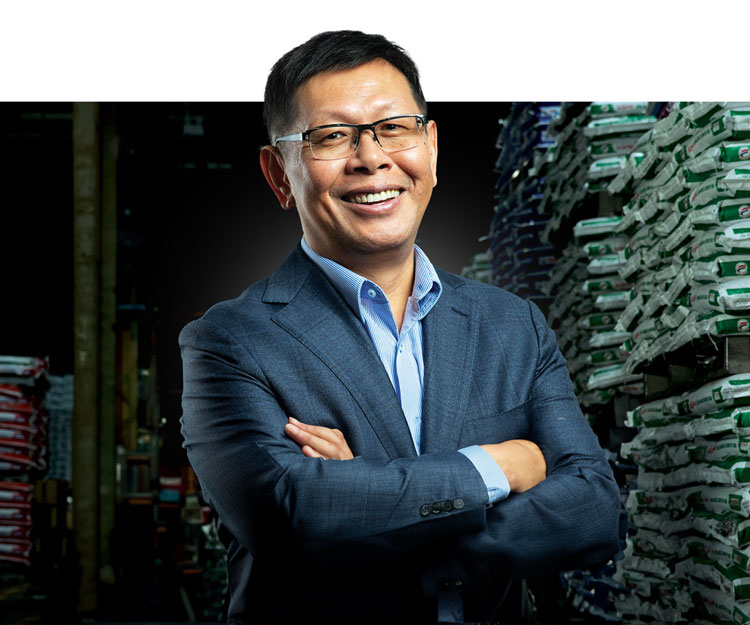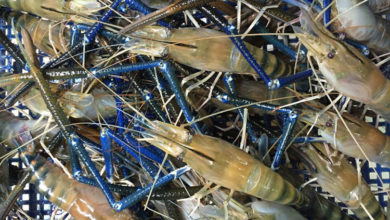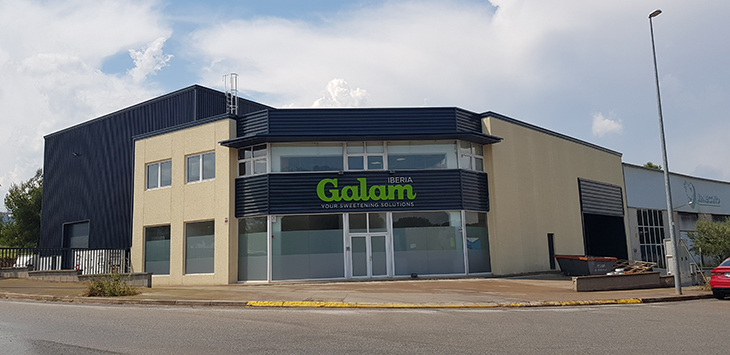The “Green Nutrition” journey A sustainable breakthrough for the aquaculture industry
As the aquaculture industry grapples with environmental challenges and ingredient shortages, "green nutrition" has emerged as a promising path towards sustainability. In an interview with Chuang Jie Cheng, CEO of Thang Long - Shenglong Biotech, Vietfish Magazine explored this growing trend.

VFM: Aquaculture farmers see you more as a friend than just a CEO or business partner. What sets your relationship apart?
Chuang Jie Cheng: The difference lies in how Thang Long engages with our customers. We foster close relationships with dealers and farmers by frequently holding in-person meetings, not only to discuss product and technical needs but also to understand their personal concerns. This personal connection has earned us their trust, with many seeing us as friends over time.
In Vietnam, maintaining strong customer relationships has always been a priority for Thang Long. We’ve built trust by focusing on long-term sustainability rather than short-term profit.
VFM: How has Thang Long Group won over even the most demanding clients?
Chuang Jie Cheng: First, I’d like to emphasize that our success is the result of the collective efforts of the entire company. The cornerstone of this success is our commitment to superior product quality. Thang Long is dedicated to delivering top-notch products—from feed and breeding stock to bioproducts—through a strict quality control process. We always put the customer at the center of everything we do.
Additionally, we continuously innovate and invest in research and development to meet market demands and maintain our leadership. Our team is highly skilled in both products and technologies, always keeping pace with market trends and customer needs to offer the best solutions.
VFM: In your view, why has “green nutrition” become such a prominent trend?
Chuang Jie Cheng: “Green nutrition” refers to producing and choosing feed that is healthy, safe, and environmentally friendly, with a focus on balanced nutrition while ensuring sustainability. This concept emphasizes the origins of feed, the production process, and the benefits for both human health and the environment.
“Green nutrition” plays a crucial role in sustainable development for several reasons. First, people are increasingly focused on the quality and health benefits of their food, and they’re also concerned about environmental impact. Traditional food production methods often harm ecosystems.
That’s why “green nutrition” offers a new solution, addressing the shortcomings of conventional methods. This trend encourages sustainable production practices—from using clean ingredients and low-emission production processes to efficient resource management. As a result, “green nutrition” helps reduce environmental stress while meeting rising consumer demands.
VFM: How does the shift from “traditional nutrition” to “green nutrition” impact production efficiency and operational costs in the seafood industry? And how can small and medium-sized enterprises adopt this new trend?
Chuang Jie Cheng: Transitioning from “traditional nutrition” to “green nutrition” will affect production efficiency and costs throughout the aquaculture industry, creating both challenges and opportunities.
Initially, production costs will rise as businesses invest in new technologies and equipment to boost sustainability. During this adjustment period, production efficiency may temporarily decline. For instance, farmers transitioning to organic feed will need time to adapt, and staff must learn new techniques, which could impact efficiency in the short term.
However, once companies adapt, efficiency will not only recover but also improve. Implementing sustainable farming methods and high-quality feed creates healthier environments, significantly reducing the risk of disease outbreaks, which in turn lowers treatment and prevention costs.
As the market increasingly favors sustainable products, “green nutrition” will provide opportunities to offset the initial investment. For small and medium-sized enterprises, participating in training programs on “green nutrition” offered by associations or government agencies can help staff master the necessary techniques. They can begin by applying “green nutrition” in a small portion of their operations, gradually expanding as they gain experience. This approach minimizes risks and controls costs, avoiding large-scale investments from the start.
VFM: What is your outlook for the future of “green nutrition” in the seafood industry?
Chuang Jie Cheng:“Green nutrition” is emerging as a key trend that will significantly shape the future.
Firstly, as resources dwindle, alternative protein sources such as insects, microalgae, and fermented microorganisms are gaining traction.
Secondly, the practice of reusing seafood processing by-products as raw materials for aquaculture feed is drawing increasing interest. This approach reduces waste, lowers feed production costs, and supports the industry’s sustainability goals.
Thirdly, traceability technologies are becoming increasingly important as consumers prioritize transparency in the origins and production processes of their food.
Fourthly, future feed enriched with Omega-3 fatty acids, antioxidants, and probiotics are expected to be in high demand. Additionally, improving breeding stock and disease prevention will enhance farming efficiency and reduce antibiotic use.
Finally, governments are paying more attention to developing sustainable aquaculture. Policies and regulations supporting “green nutrition” are likely to be widely implemented, including subsidies for sustainable feed, support for eco-friendly technologies, and increased industry oversight to ensure sustainability and food safety.
VFM: Does Thang Long plan to collaborate with other major players in the industry to research and develop alternative protein sources for sustainable aquaculture?
Chuang Jie Cheng: Protein represents a significant cost in the aquafeed industry. Traditional protein sources like fishmeal and soybean meal are being depleted, making the search for alternative proteins a long-term strategy for Thang Long Group.
We highly value partnerships with leading seafood companies, including biotech firms and research institutions. These collaborations allow us to share resources and technology, accelerating the research and commercialization of alternative proteins.
Our research institute is also focused on developing plant-based, insect-based, fermented, and cell-cultured proteins that meet the standards for nutritional value, taste, and sustainability.
Thang Long is committed to promoting the sustainable development of the aquaculture industry through various policies and concrete actions. Research and development of alternative proteins is a key part of our mission.
Our ultimate goal is to provide alternative protein products that meet the growing demand for high-quality, sustainable feed. We are dedicated to ensuring that these products are competitive in terms of price, quality, and availability.
VFM: In May 2024, Thang Long inaugurated its first aquafeed factory in Northern Vietnam. Is this part of the company’s commitment to providing high-quality products to farmers?
Chuang Jie Cheng: Yes, the aquafeed market in Northern Vietnam has a capacity of nearly 400,000 tons. Before the factory was built, we had to supply feed from our southern facilities, which led to two main challenges: high transportation costs and insufficient supply to meet demand. Reducing transportation times was crucial, not only to ensure product freshness and quality but also to lower operational costs, thereby improving farming efficiency and competitiveness.
Building a factory in the North allows for better control of the production process, ensuring that products meet the highest quality standards and are tailored to local environments and needs. This new facility reflects Thang Long’s strong commitment to providing farmers with high-quality feed and represents a significant step in our expansion strategy within Vietnam’s seafood industry.
VFM






